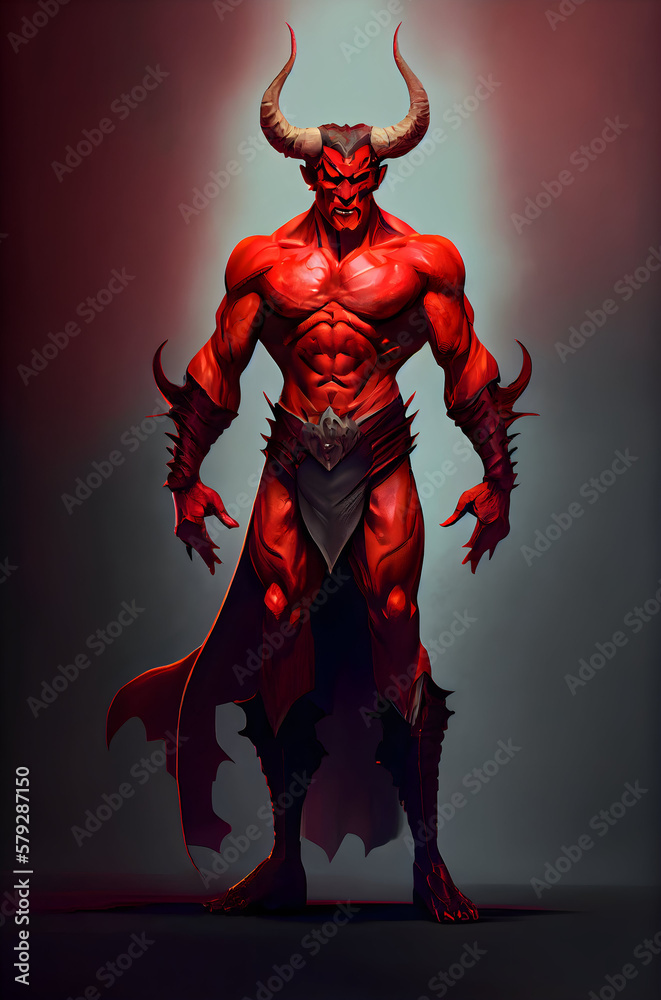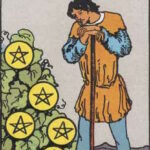Understanding the symbolism and intricate meanings behind the Tarot cards can provide profound insights, especially when interpreted from a religious perspective. Among the 78 cards in a traditional Tarot deck, the Devil card often invokes a complex tapestry of emotions and interpretations. In the context of Christianity, the Devil card assumes a multifaceted role—embodying not just malevolence and temptation, but also a mirror reflecting the human experience of sin, choice, and redemption.
At the outset, it is essential to grasp what the Devil card represents in Tarot. Typically numbered as card 15 in the Major Arcana, it often depicts a formidable figure embodying darkness, temptation, and bondage. This often elicits fear or trepidation when seen in a reading, but its implications stretch beyond mere ominous connotations. In essence, the Devil card serves as a reminder of the internal struggles faced by individuals—a theme that resonates deeply within Christian theology.
In Christianity, the figure of the Devil is most commonly associated with Satan, the adversary of God and humanity. He is perceived as the personification of evil and temptation, a relentless force encouraging disobedience and moral decay. When combined with the symbolism of the Tarot, the representation of the Devil card can be seen as a metaphorical exploration of these themes. Instead of representing an external evil, it encapsulates the internal battle between good and evil within each individual.
A deeper analysis of the Devil card unveils themes of bondage and addiction. From a Christian perspective, the notion of sin often ties to a form of spiritual bondage—an inability to break free from destructive patterns or behaviors. Interpretively, the Devil card highlights areas in one’s life where individuals might feel trapped by their own decisions or desires. The depiction of individuals shackled in darkness serves as an allegory for the human condition, intricately linking to biblical narratives where followers grapple with temptation and the struggle for redemption.
Moreover, the Devil card speaks to the importance of free will in Christian doctrine. Each person is endowed with the power to choose, and these choices are critically examined within the context of their spirituality. A reading featuring the Devil card prompts reflection on personal decisions and the consequences that arise from them. It raises significant questions: Are you shackled by your own thoughts and actions? Are you allowing temptations to lead you away from your spiritual path? Such inquiries beckon a deeper consideration of one’s moral compass and spiritual aspirations.
Another layer of the Devil card’s meaning is its duality. Contrary to a purely malevolent interpretation, the card invites individuals to confront their fears and confront the darker aspects of their psyche. It suggests that there can be a form of liberation through acknowledgment and confrontation. Just as Jesus faced temptation during His time in the wilderness, individuals are challenged to engage with their own temptations actively and recognize them for what they are—tools that can either lead to spiritual despair or opportunities for growth and enlightenment.
A pivotal aspect of understanding the Devil card in a Christian context is recognizing its correlation with the concept of sin. Sin is not merely an act of wrongdoing but is often portrayed as a state of being that distances an individual from God. The Devil card, therefore, is emblematic of this estrangement, reminding one that sin can ensnare the soul, leading to disconnection from divine grace. In grappling with its implications, one might be motivated to seek forgiveness and reconciliation with God, striving towards a path of redemption.
One might also consider the role of the Devil card in providing an opportunity for spiritual awakening. Reflection upon the challenges and temptations signified by this card can lead to profound realizations and transformative experiences. In a reading, it encourages the seeker to examine their life’s choices critically, seeking divine guidance and strength to overcome adversities. This exemplifies how the darkest aspects can lead to illuminating experiences, allowing individuals to rise above and break free from limitations imposed on their spiritual journey.
Finally, integrating the Devil card into a holistic perspective can also involve discussing societal implications. The card invites not merely personal introspection but also encourages contemplation of the collective moral health of society. The challenges of temptation and moral choice are universal and persist throughout cultural narratives. In this way, the Devil card can be viewed as a call to action for believers to engage in dialogues around ethics, support systems, and collective spiritual well-being.
In conclusion, while the Devil card in Tarot is often misunderstood and relegated to a singular interpretation rooted in fear and negativity, a comprehensive exploration reveals its deeper relevance within a Christian context. It acts as a poignant symbol of the complex interplay between temptation, personal choice, and spiritual redemption. Recognizing the lessons buried within the card can empower individuals to confront their fears, reflect upon their moral choices, and ultimately embark upon a journey of spiritual enlightenment. The Devil card, therefore, is not merely a harbinger of doom but a potent reminder of the enduring struggle between light and darkness that resides in every heart.









Leave a Comment